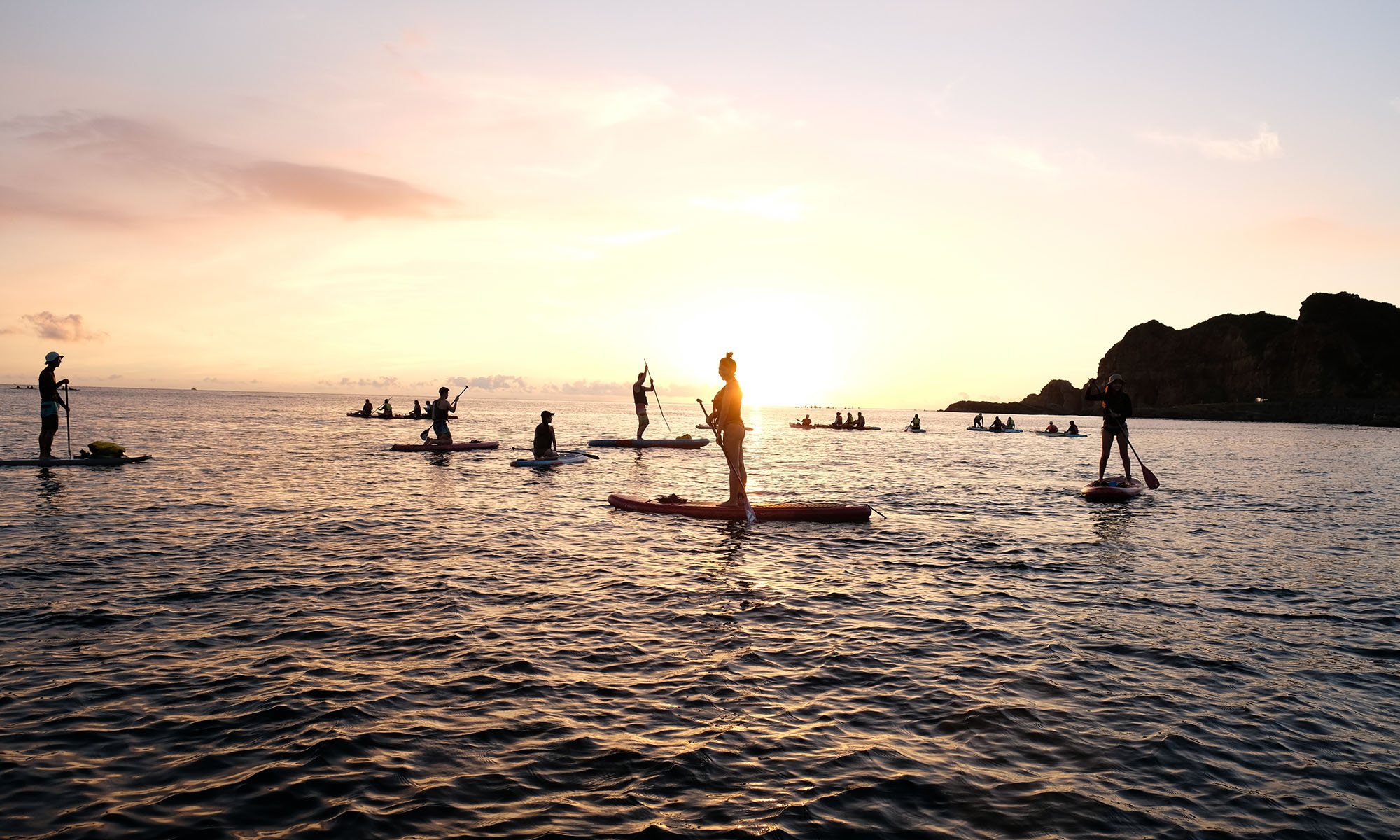New Taipei is a great destination for couples seeking adventure, or to just relax. With beaches, indigenous mountain villages, historic old streets, remote nature and cultural experiences, New Taipei has something for every couple. Most destinations make for excellent day trips from Taipei, and locations like Jiufen or Wulai make for great romantic getaways if time allows.
📍 Route 1: Northern Coast and Pingxi Rail Line
Elephants Trunk Kayak/SUP Tour
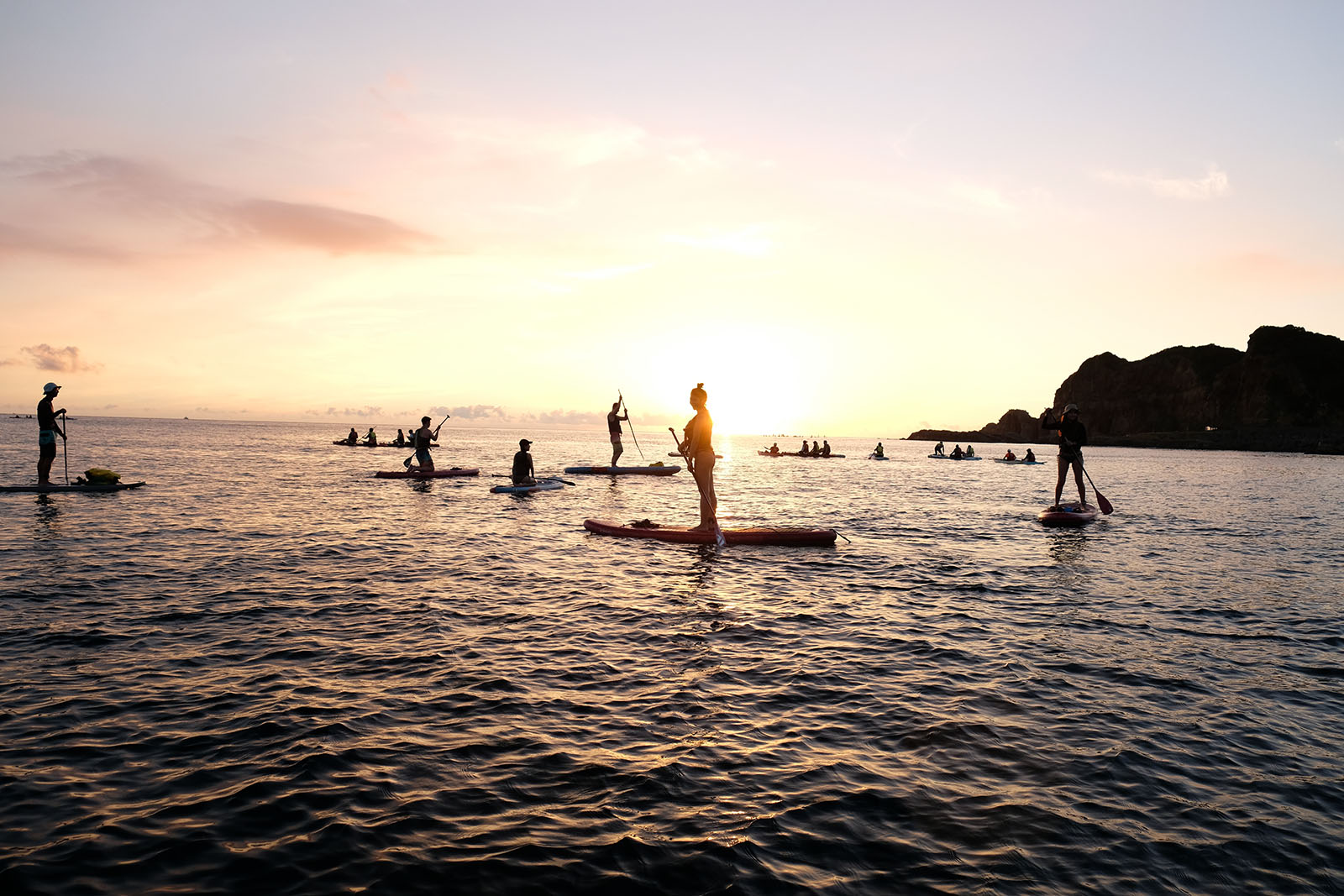
Elephant’s Trunk Rock is a coastal rock arch, which when viewed from the right angle, looks very much like an elephant’s head. Easy access to this geological formation can be had via a short trail from the Shen’ao Fishing Port parking lot. The trail ends on a cliff just opposite the Elephant’s Trunk rock arch. This area is popular for Instagram photos and may get a little crowded as a result. For the more adventurous, a number of providers offer kayak and standup paddleboard tours to the waters just below Elephant’s Trunk Rock. Besides offering another unique vantage point of Elephant’s Trunk Rock along with the Northern Coastline, they also allow tourists an opportunity to experience local sea life including sea turtles, puffer fish, and countless species of subtropical fish. Ocean tours usually run from June to October depending on how early the Northern Monsoon arrives; rental options include standup paddleboards and kayaks.
Longdong Bay
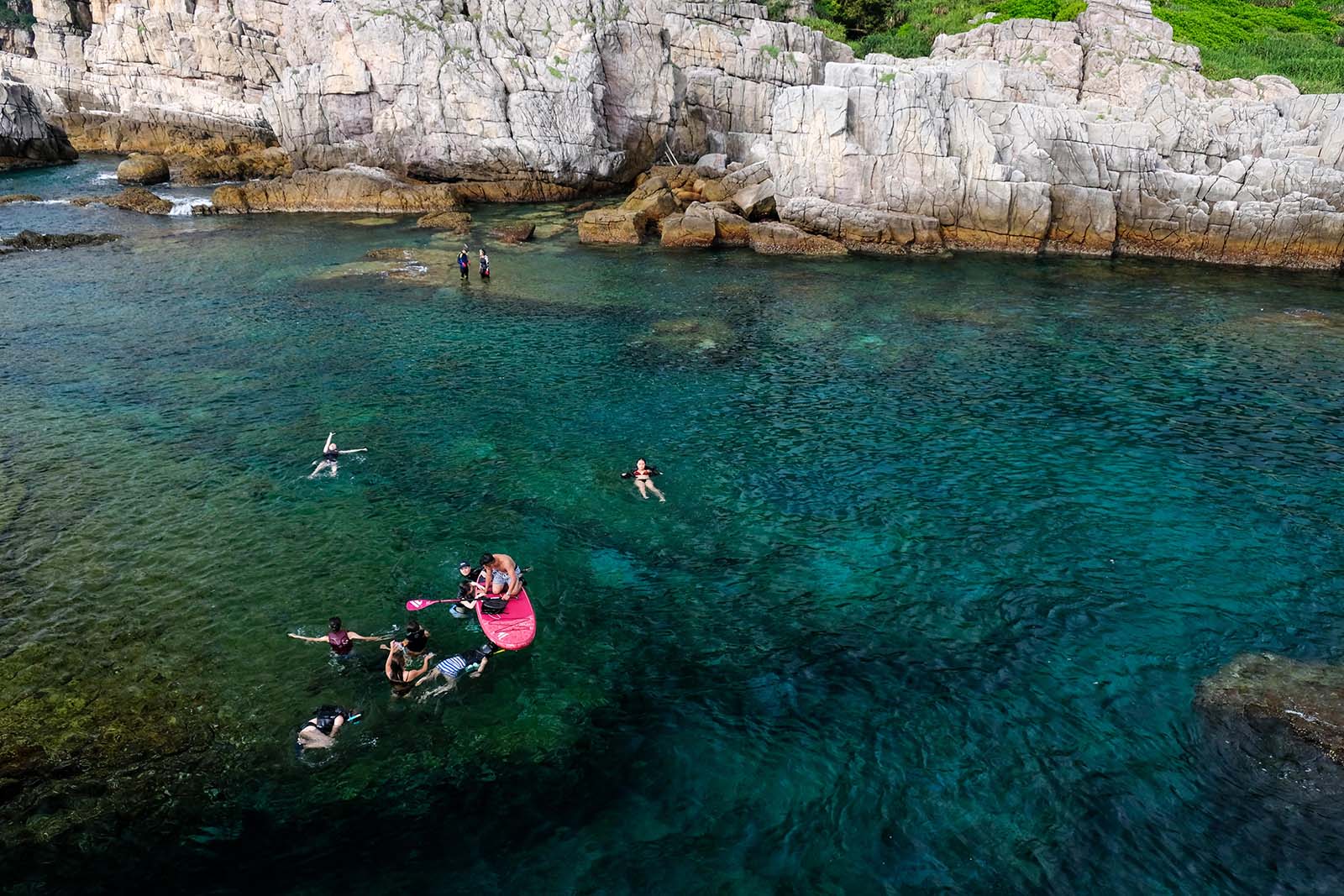
Longdong Bay is the largest bay on Taiwan’s Northern Coast. Large numbers of colorful fish, some coral (especially towards the Longdong Caves), and an overall pristine marine environment make it a great place for cooling off in the ocean. Just around the corner from the bay, Longdong’s seaside cliffs are well-known for being Taiwan’s premiere rock climbing destination. Scuba diving, freediving, standup paddle and rock climbing are all possible activities and it’s recommended to reserve over a week in advance.
Longdong South Ocean Park, just half a kilometer south of Longdong’s climbing area, features three natural ocean-water fed swimming pools—depth varies with the tide, as does the concentration of fish.
« Read LessPingxi Old Street
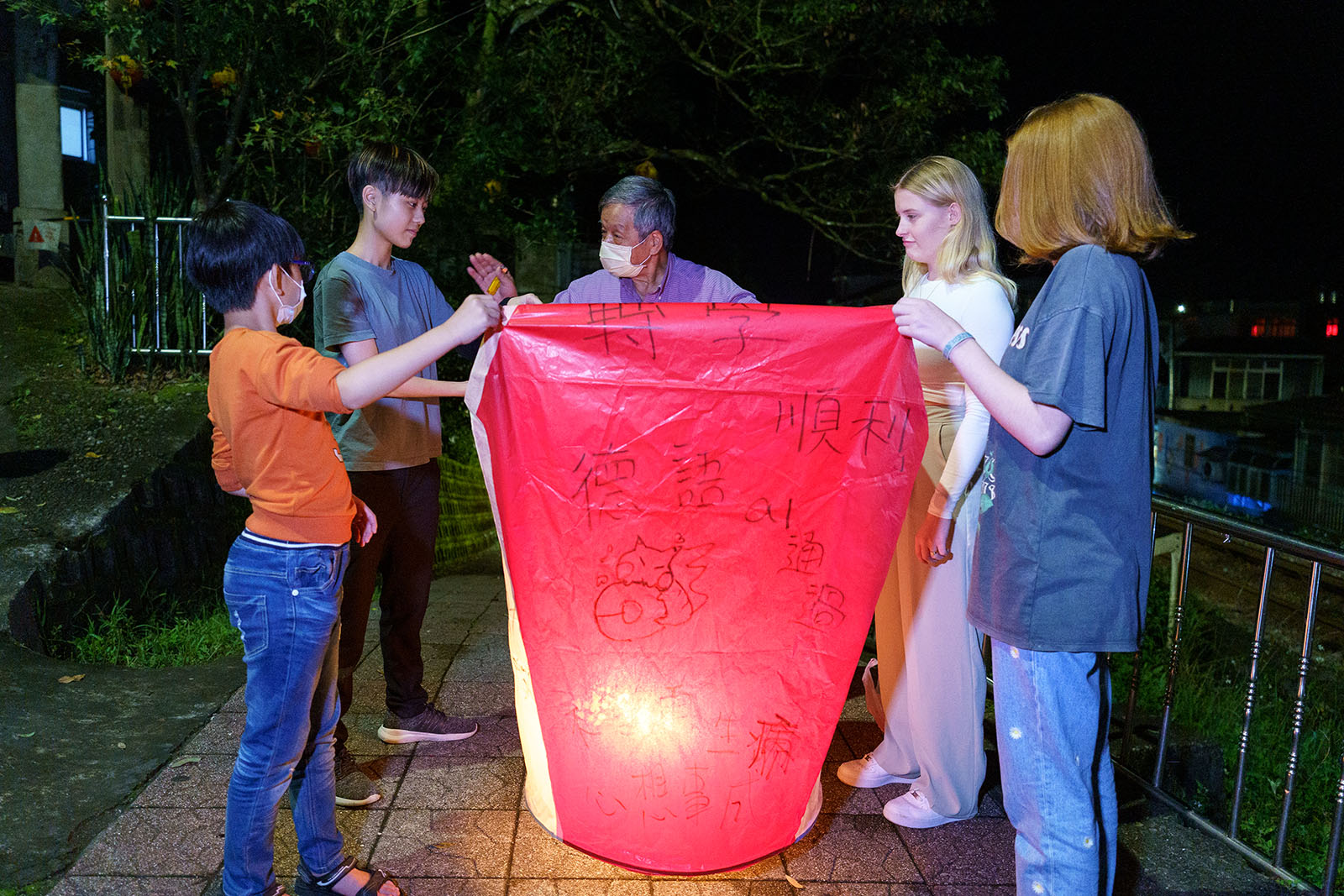
Pingxi, located at the end of the nostalgic Pingxi Rail Line, is a rather small village that is built on a slope around the rail tracks. With only two streets, one of which borders the railroad tracks, it’s no wonder this town’s quaint aesthetic once served as the backdrop for many of famed Taiwanese director Hou Hsiao-hsien’s films about pre-industrialized Taiwan. Today, Pingxi is one of the best destinations for sky lantern launching, snacking on authentic traditional small eats, and getting in a healthy dose of nostalgia. While the old streets are not as large as many of the other towns around Taiwan, they are still overflowing with local authenticity—one particularly delicious local snack, the peanut butter flake ice cream rolls, can be found just to the south of the railroad tracks.
Jiufen
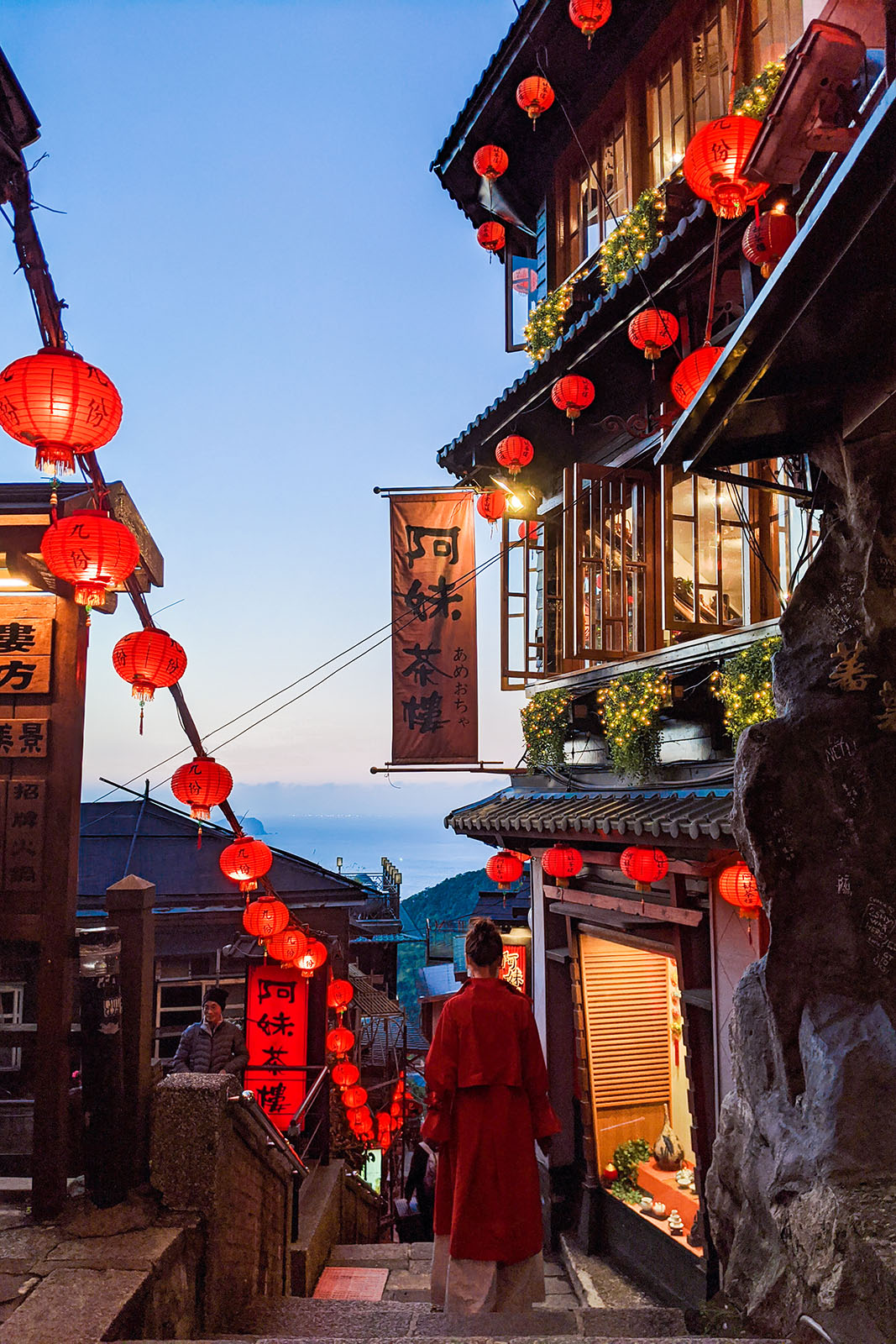
What makes the village of Jiufen particularly magical is its mountaintop location overlooking the Northern Coast. Not even the streets that cut across the mountain are flat, and many of the labyrinth-like alleys are simply staircases lined with shops. In the evenings, rows of red lanterns illuminate the streets and teahouses of Jiufen, and depending on the season, a fine mist might settle over the town adding to the already otherworldly ambience.
Before its revitalization into a tourist-friendly mountain village, the village of Jiufen served as the backdrop to Hou Hsiao-Hsien’s Golden Lion Award-winning masterpiece City of Sadness. The success of this nostalgic film catapulted the town’s transformation into the tourist mecca it is today.
If one ventures out of Jiufen’s crowded old streets and down one of its many alleys, there are numerous vantage points to take in the sunset and evening glow. On clear days, it’s not only possible to see Keelung Harbor to the north, but also Yangmingshan National Park and even Taipei 101.
« Read Less📍 Route 2: Pinglin Tea Gardens and Wulai
Pinglin Old Street
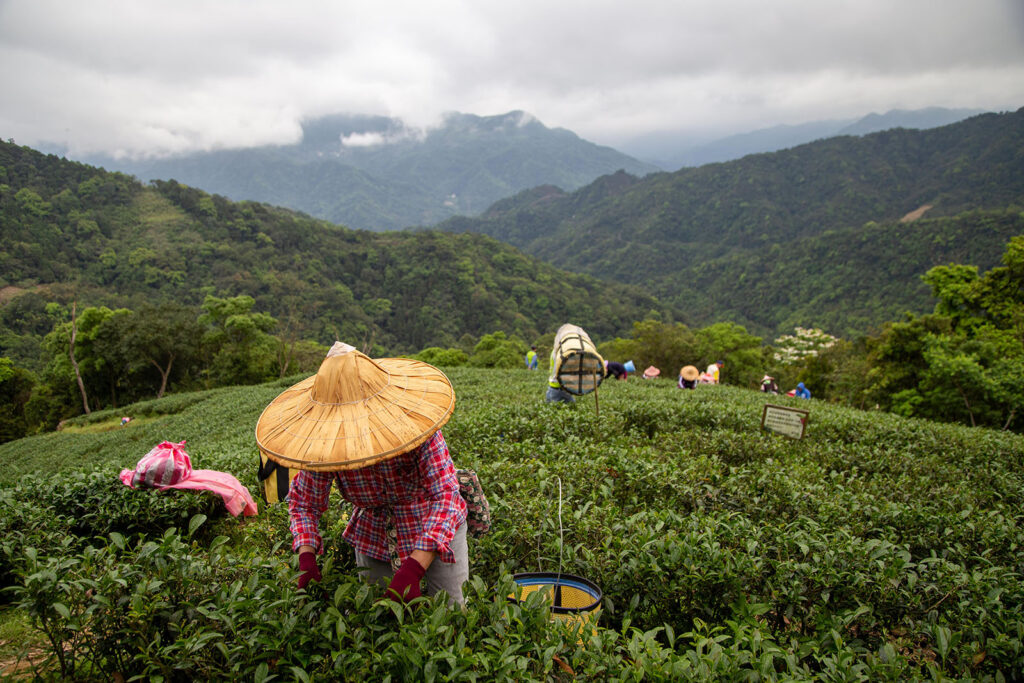
Besides being the source of Taipei’s drinking water, Pinglin is Northern Taiwan’s most famous tea growing region. Unlike the alpine terrain of Central Taiwan’s tea growing regions, Pinglin’s low-altitude mountains and hills make for an easily accessible day trip. Even though it’s just off the highway, the isolated scenery of the tea farms and the idyllic color of the crystal clear rivers here will make you forget you are just a 45-minute drive from Taipei.
Begin at the Pinglin Tea Museum for a general introduction to tea types, tea manufacturing, and the tea making ceremony itself. Armed with this knowledge, take a walk down Pinglin’s old street where local tea producers sell their seasonal products out of the first floor of their houses. Many of the shops along the main street and Pinglin’s old street also operate small restaurants serving local vegetables, tea oil vermicelli, and other local dishes.
« Read LessNeidong Forest Recreation Area
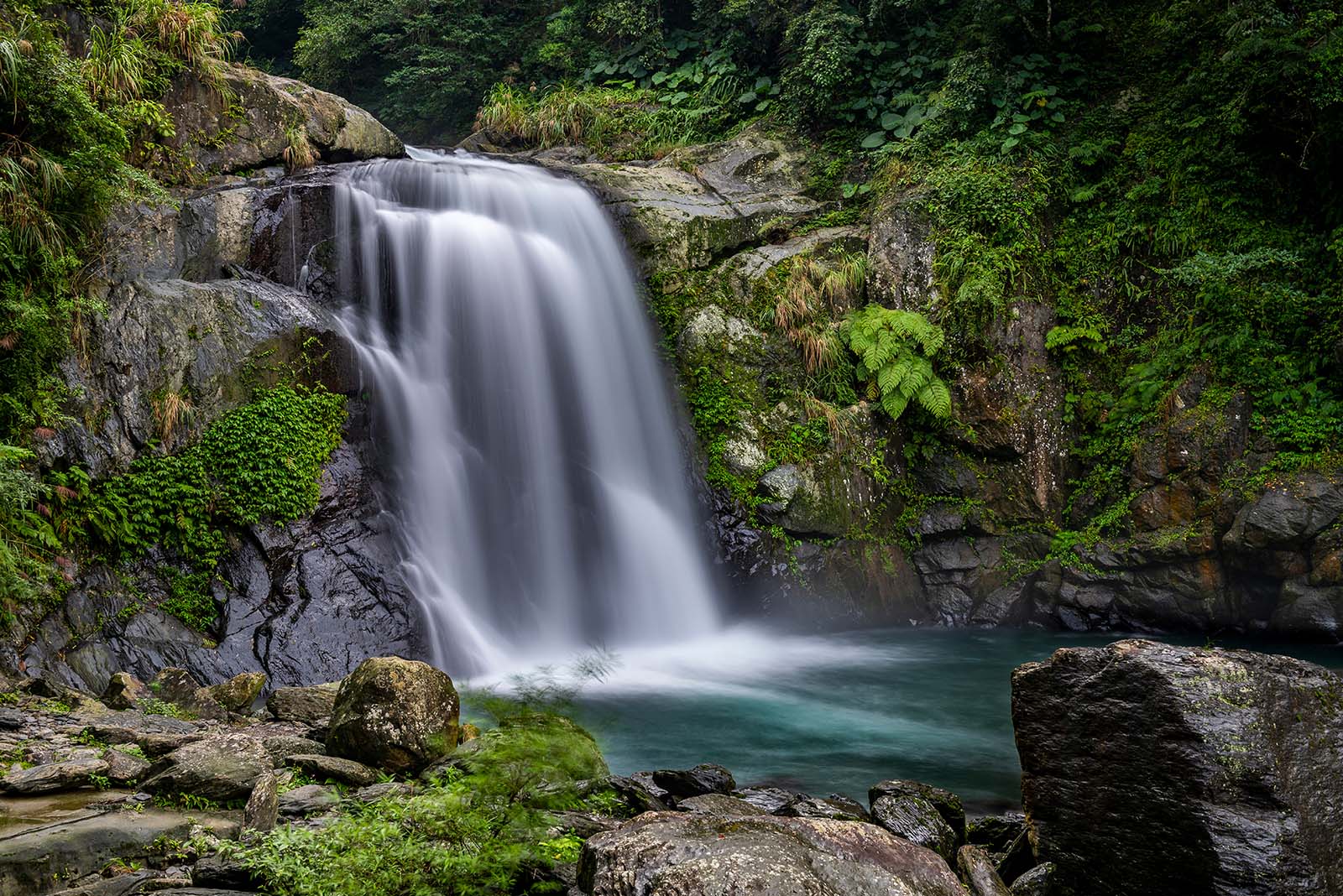
Located in the mountains of Wulai, Neidong Forest Recreation Area is known for being a haven for Taiwan’s numerous fern species. Just several kilometers upriver from the hot spring village of Wulai, Neidong Forest Recreation Area also features numerous waterfalls observation platforms and hiking trails. In fact, just by the entrance, one can catch a glimpse of the powerful Wusha Waterfall across the Nanshi River. The park is also considered one of the best places in Taiwan for frog spotting—the park’s nickname, “Wawa” Valley, is derived from the croaking sound that indigenous frogs make.
The Atayal Town of Wulai
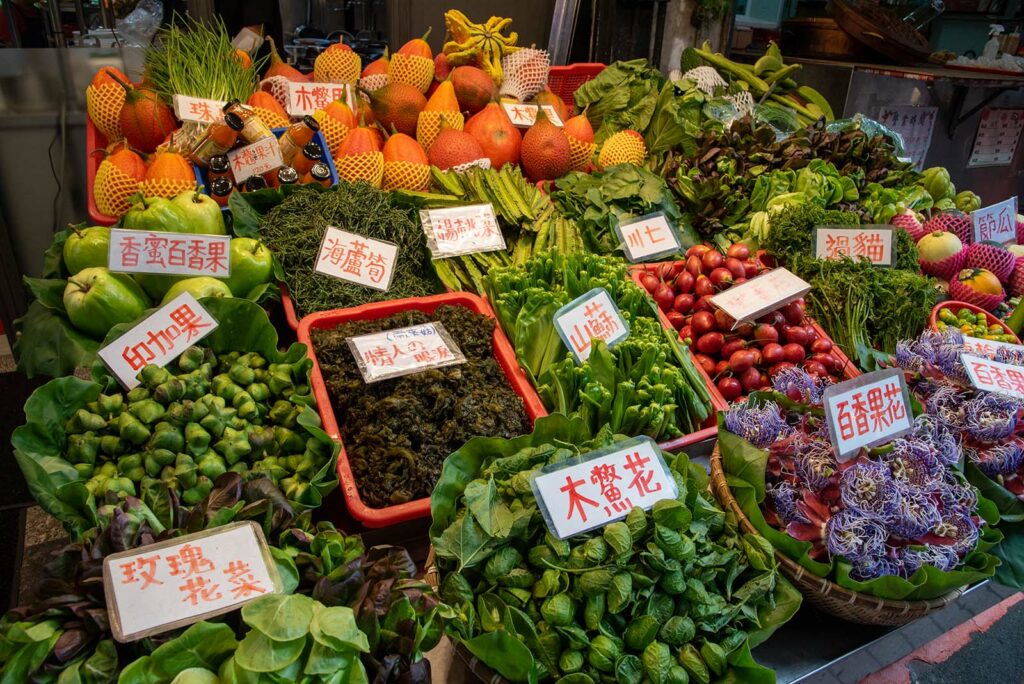
The hot spring town of Wulai is named for the Atayal phrase “kilux ulay”—meaning “hot and poisonous—which is said to be what an Atayal hunter uttered after seeing steam coming from the river below. The town is known for its hot springs, its famous old street and the Wulai Waterfall, which is the highest waterfall in Northern Taiwan. Wulai Old Street is lined with indigenous restaurants specializing in foraged vegetables dishes. In fact, it’s likely that you won’t recognize a single plant they serve you!
The Wulai Waterfall can be accessed by walking further down the road from the old street, or by taking a ride on the Wulai Scenic Train—specifically designed to ferry tourists to and from the Waterfall’s Gondola Station. At the waterfall, indigenous shops run by local Atayal sell traditional clothing, handicrafts, and indigenous snacks—be sure to try the rice-stuffed bamboo, a traditional method of preserving rice for lunch. An optional ride on the Wulai Gondola offers unbeatable views of the Nanshi River Gorge, Wulai Waterfall and Wulai Old Town.
« Read Less📍 Route 3: Temples and Museums
Zhonghe Hongludi Temple
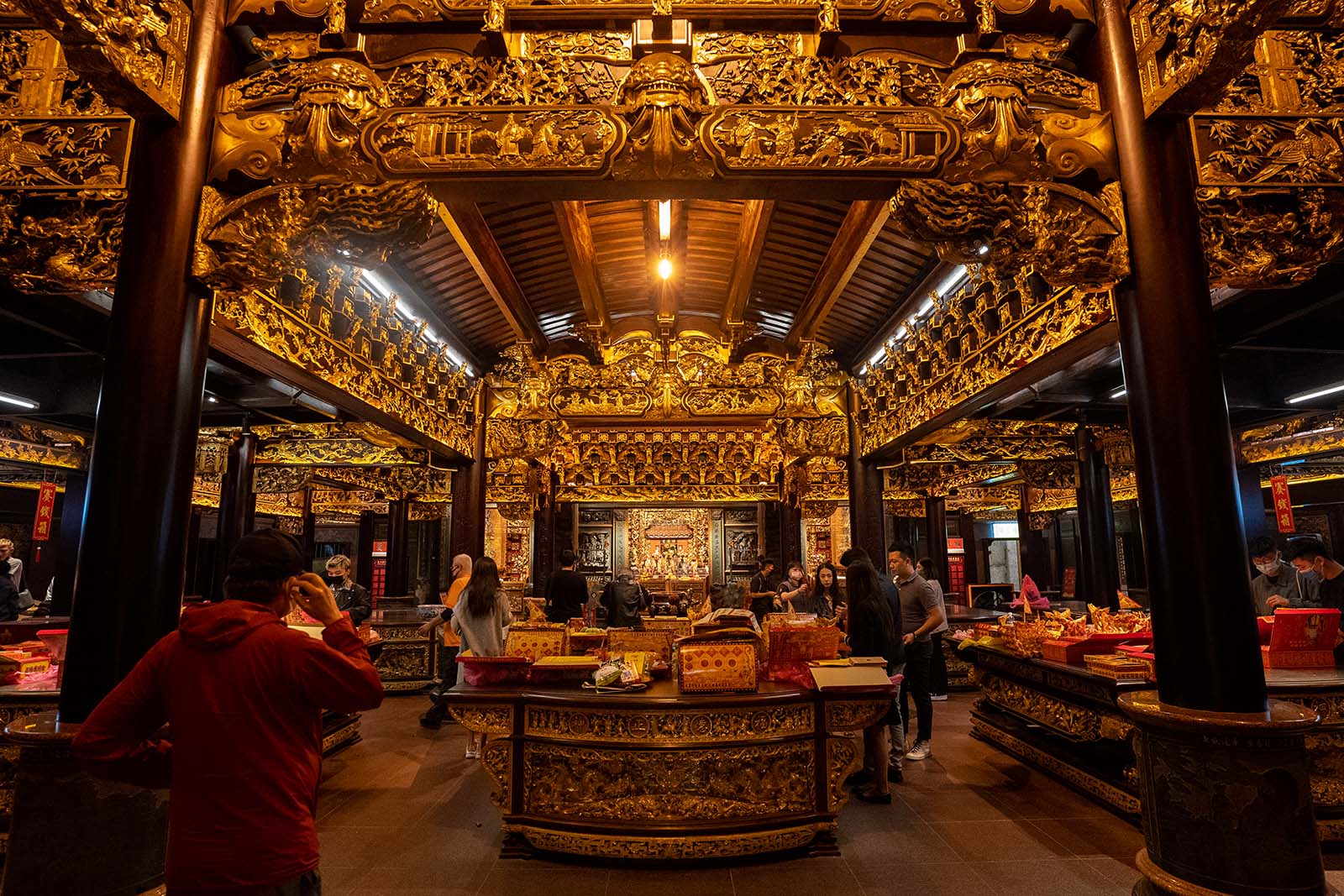
The largest Earth God temple in Northern Taiwan offers financial blessings, and amazing night views of Taipei’s skyline. The massive Zhonghe Hongludi Temple is located on a 300 meter peak in the foothills of Southern Taipei. It was originally built with the purpose of safeguarding the neighborhoods below it, but has since turned into a popular hiking destination and one of the best places to get a tranquil view of nighttime Taipei.
The temple features the largest Earth God statue in all of Taiwan. It is said that touching the golden ingot held by the Earth God brings good luck. In fact, so many people have touched it wishing for wealth that it has quite a lustrous glow to it.
« Read LessYingge Ceramics Street
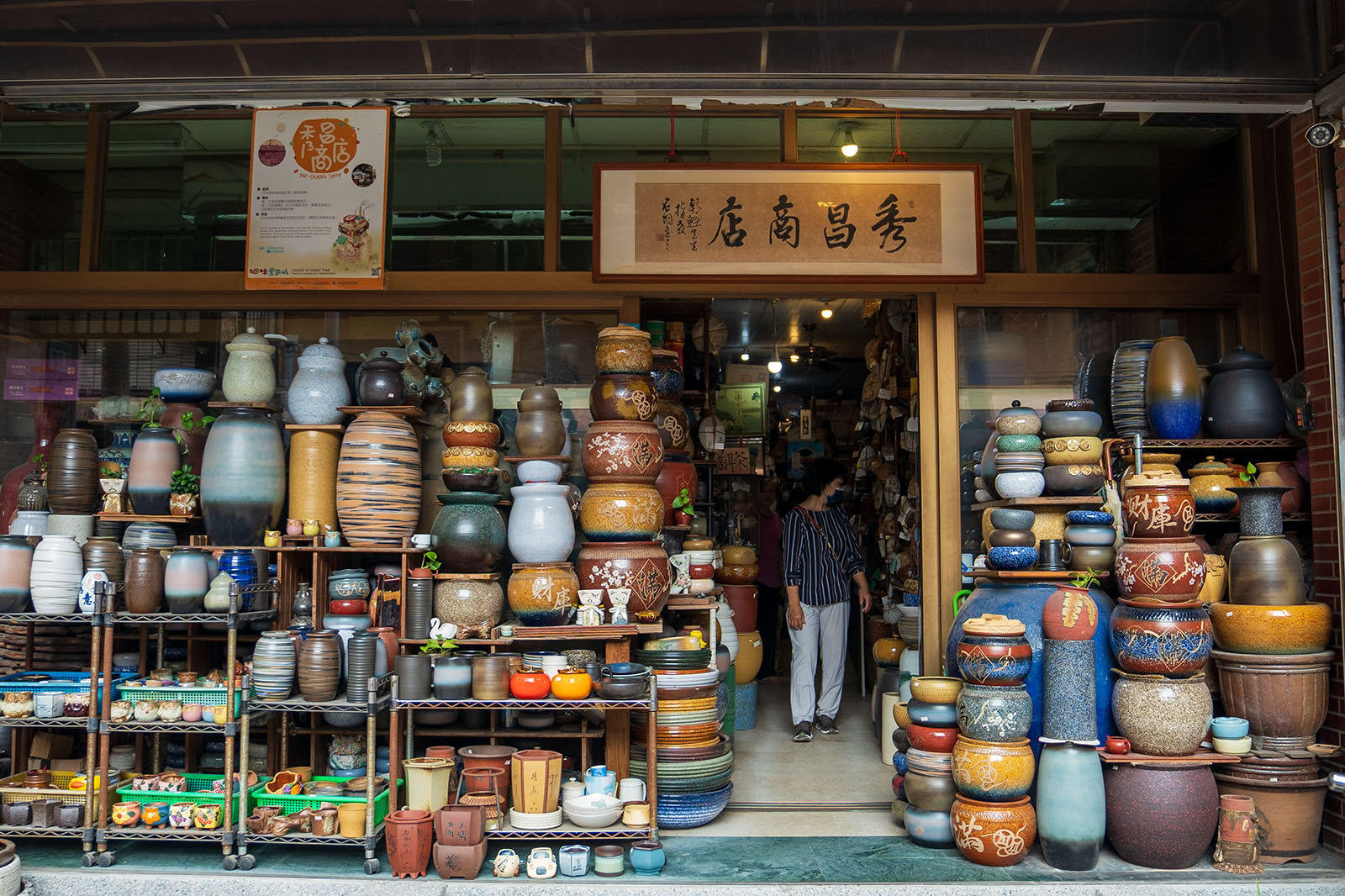
Lauded as one of the most memorable places to visit in Taiwan by tea, ceramics and pottery lovers alike, Yingge Ceramics Street is one of the best examples of traditional industry turning into the focal point of tourism (as opposed to fading out in the face of globalization). Yingge’s Old Streets stay true to the town’s roots as a pottery center, with shops offering selections of both household items and authentic artisan pieces. Some studios in Yingge also offer DIY pottery classes. Due to the finishing process, DIY pieces must be mailed (international shipping is offered) approximately a month after the class.

